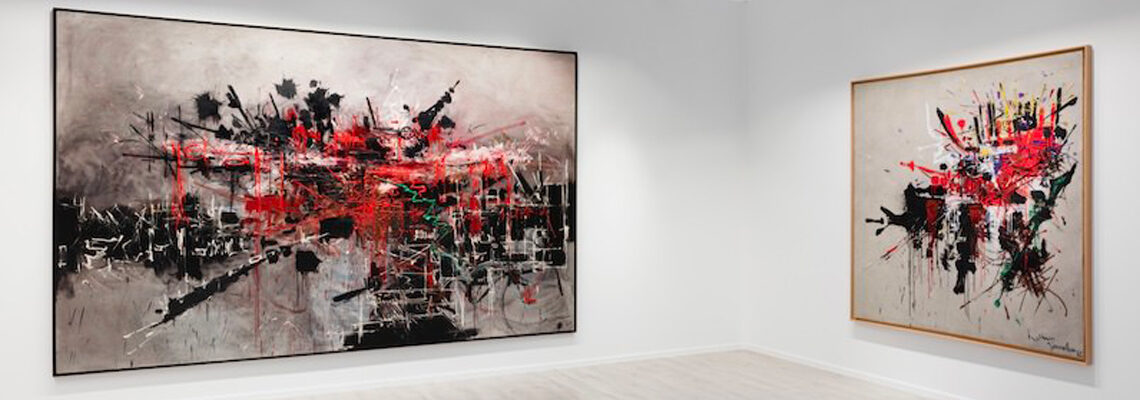Georges Mathieu (1921-2012) was a French painter and art theorist. He was a pioneer of Tachisme, and is often considered the first European Abstract Expressionist.
Mathieu was born in Boulogne-sur-Mer, and studied art at the École des Beaux-Arts in Paris. He served in the French army during World War II, and was captured by the Germans in 1940. He spent the next five years in a prisoner of war camp.
After the war, Mathieu returned to Paris and resumed his studies. He quickly developed a unique style of painting, which he called "Tachisme". This style was characterized by large, gestural brushstrokes, and a focus on the process of painting itself.
Mathieu's paintings were first shown in a solo exhibition in Paris in 1947. His work was met with critical acclaim, and he quickly gained international recognition. He went on to exhibit his work widely throughout Europe and the United States.
Mathieu's work had a profound impact on the development of Abstract Expressionism. His use of gestural brushstrokes and his focus on the process of painting were both influential to the Abstract Expressionists. Additionally, his work helped to popularize Tachisme, and he is often credited with being the first European Abstract Expressionist. Visit estades.com for more.
History of Art: Georges Mathieu
Mathieu is a French artist who is associated with the Tachisme movement. He was born in 1921 and died in 2012. He studied art at the École des Beaux-Arts in Nancy and at the École du Louvre in Paris. He had his first solo exhibition in 1947.
Mathieu is known for his large scale, gestural paintings. He was influenced by the Abstract Expressionists, specifically Jackson Pollock. Mathieu developed his own technique which he called "decalcomania". This involved dripping paint onto canvas and then pressing another sheet of canvas onto it. He would then pull the two sheets of canvas apart, creating a marbled effect.
Mathieu was a prolific artist and exhibited widely. His work can be found in many major museums around the world.
Georges Mathieu, the cry of revolt of a submerged man
A self-taught painter, Georges Mathieu rose to prominence in the 1940s as a leading member of the tachistes, a group of artists who developed a spontaneous and gestural form of painting. Mathieu's work is characterized by bold, dynamic brushstrokes and a vibrant use of color, which he applied to a variety of subjects, including still lifes, landscapes, and portraits. In the 1950s, Mathieu began to experiment with more geometrical forms, creating works that were both visually arresting and intellectually challenging. In the later years of his career, Mathieu became increasingly interested in philosophy and mysticism, and his work took on a more metaphysical quality. Despite his association with the tachistes, Mathieu always maintained a unique and independent vision, which earned him the respect of his peers. Georges Mathieu was a true original, and his work continues to inspire artists today.
Georges Mathieu And His Paintings
Georges Mathieu, who was born in 1921, is a French painter who is associated with the Tachisme movement. After initially working in an advertising agency, he started painting in 1947 and had his first solo exhibition in 1951. His paintings are often large-scale and gestural, and he is known for using a variety of techniques, including using his hands and rags instead of brushes.
Mathieu's paintings are often compared to those of Jackson Pollock, and while the two artists are similar in some ways, Mathieu was actually working before Pollock. In fact, Mathieu has been credited with helping to pave the way for the Abstract Expressionist movement in the United States.
While Mathieu's work is not as well-known as that of some other Tachistes, such as Pierre Soulages, he has had a significant impact on the development of contemporary painting. His work can be seen in a number of major museums around the world, and he continues to paint and exhibit his work today.
In conclusion, it can be said that Georges Mathieu was a key figure in the development of tachisme and other abstract art movements. His work was influential to many subsequent artists, and he continues to be highly regarded by the art world today.
